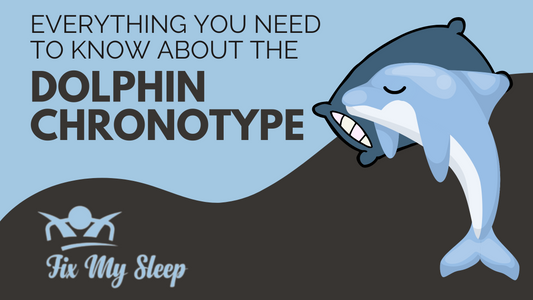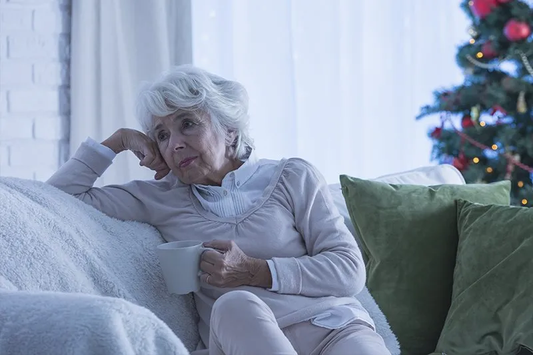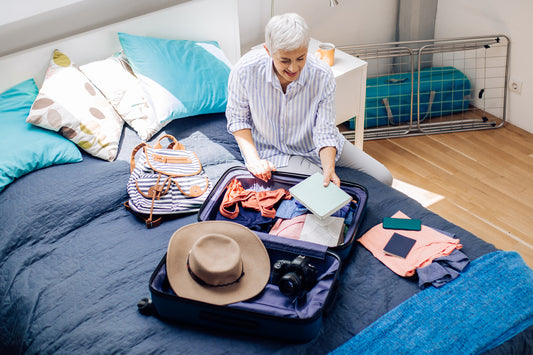Sleep disorders are a very serious issue that can seriously harm a person’s quality of life. Worse still, chronic conditions have become increasingly common in our hectic and stress-filled lives. In fact, 1 in 9 people suffer from insufficient sleep every single night.
Most people are prone to acute sleep problems, which means they will experience some of the symptoms for a short period of time. In most cases, sleep disorders are defined as conditions that last for at least one month. There are several types of sleep disorders, but they fall into six main categories. They are all listed below.
1. Insomnia
If you regularly find that you can’t get to sleep, you are not alone, it is widely accepted that 30% of the adult population experiences short-term insomnia while 10% have long-term effects lasting over one month. It is, therefore, the most common type of sleep disorder.
Insomnia is primarily thought of as an inability to initiate sleep. However, it can also embody duration, consolidation, or quality of sleep. Crucially, the impacts of insomnia will cause impairment in daily activities at work or leisure.
The two main categories of insomnia are chronic insomnia disorders and acute (short-term) insomnia disorders. However, two additional categories - “other” and “isolated symptoms”- are covered by the term too.
Aside from impacting a person’s performance of daily tasks, chronic insomnia can cause mental health issues like anxiety and depression while simultaneously causing heart problems like increased blood pressure. Most people additionally find that the lack of sleep harms their natural beauty.
2. Sleep-Related Movement Disorders
For normal sleep, you will want to be in control of your body before, during, and after active sleep. Sleep-related movement disorders are when you lose control during at least one of those stages. They have been scientifically linked to epilepsy but can impact the wider population. Rapid Leg Syndrome, for example, impacts up to 10% of adult Americans.
In addition to RLS, sleep-related movement disorders cover Periodic Limb Movement Disorder (PLMD) leg cramps, bruxism, rhythmic movement disorder, and propriospinal myoclonus at the start of sleep.
Some of the conditions are relatively harmless, although they could disrupt the person’s sleeping partner. However, others can put individuals and their partners at greater risk of accidents. For the individual, it can also cause exhaustion and prevent the arrival of Rapid Eye Movement stages of sleep.
Sleep-related movement sleep disorders can also be attributed to medical disorders, medications, or substance abuse. Lifestyle changes, medications, and a conscious effort to regain control of the limbs can all be incorporated into sleep improvement plans. In the case of bruxism, which is characterized by teeth grinding, wearing the appropriate mouth protection is advised.
3. Sleep-Related Breathing Disorders
Sleep-related breathing disorders are defined as “conditions of abnormal and difficult respiration during sleep” by Sleep Foundation. The classification can cover a range of conditions, from snoring to sleep-related hypoventilation disorders.
Further examples of sleep-related breathing disorders include sleep-related hypoxemia disorder, catathrenia, and all instances of sleep apnea. Sleep apnea can be split into Obstructive Sleep Apnea (OSA) and Central Sleep Apnea (CSA). OSA relates to the throat muscles relaxing during sleep, which can occur in adults or children. Of the 30% of adults who experience it, the majority are men.
CSA relates to conditions caused by blocked communications between the brain and the respiratory system. Variants may include different elements like Cheyne-stokes breathing or medication and substance influences.
Treatments are dictated by the type of sleep apnea, as well as the severity of symptoms. Loud snoring, morning headaches and/or dry mouth, abrupt awakenings in the night, and moments of stopped breathing are the common symptoms that must be checked by a doctor.
4. Parasomnias
A parasomnia is a condition that can be defined as an unwanted physical movement experienced during sleep. Sleepwalking, which impacts over 8.4 million Americans, is one of the most well-known types. However, most issues fall into one of two categories - Non-Rapid Eye Movement (NREM) parasomnias, and Rapid Eye Movement (REM) parasomnias.
Sleepwalking is joined by sleep terrors, arousal disorders, and sleep-related eating disorders in the NREM category. REM parasomnias include nightmare disorders, REM sleep behavior disorders, and recurrent sleep paralysis. Additional parasomnias include enuresis, hallucinations, and exploding head syndromes.
Some parasomnias, like bedwetting, are more common in children while others like sleepwalking tend to surface in late childhood or during adulthood. Sleep deprivation, stress, anxiety, neurological illnesses, and medication side effects are some of the most common causes. It usually causes daytime fatigue as well as potential dangers during the night.
Many sufferers will benefit from creating a safer sleeping environment while a range of behavioral therapies and medications, including melatonin, can be used to treat the issue. Adjusting your sleep habits to match personal body clock preferences may also help.
5. Circadian Rhythm Sleep-Wake Disorders
Circadian rhythm sleep-wake disorders are a group of conditions that lead to inadequate sleep patterns, such as insomnia, where the patient fails to reach the REM phase or long-wave sleep patterns. Around 3% of the adult population suffers from the condition and may experience delayed sleep-wake phase disorders, irregular sleep-wake rhythms, or a non-24-hour sleep-wake rhythm disorder. Although the last of those tend to impact blind people only.
In some cases, circadian rhythm sleep-wake disorders are caused by lifestyle situations. Both jet lag disorders and shift work disorders could be defined as lifestyle-caused issues, which can also mean that they are temporary issues.
However, disturbed sleep habits can become a more permanent issue. With delayed and advanced sleep-wake phase disorders, the disruptions occur when trying to get to sleep or when awakening while it can also cause involuntary waking and an inability to drift back off. It feels as though you have no control of the body’s internal clock.
Even after a full night’s sleep, patients regularly report feeling tired in the daytime as a result. If medications and lifestyle changes do not work, unconventional ideas may help. Sleep journals and actigraphy are two of the key steps for gaining a diagnosis.
6. Central Disorders Of Hypersomnolence
Central disorders of hypersomnolence are primarily characterized by daytime sleepiness and drowsiness that is caused by inadequate sleep at nighttime. All forms of narcolepsy fall into this type of sleep disorder but falling asleep during the day isn’t a necessary factor. In many cases, individuals simply feel tired and unable to connect with their surroundings during the daytime.
Insufficient sleep syndromes, Klein-Levin syndrome, and idiopathic insomnia are some examples. While narcolepsy impacts just 1 in 2,000 Americans, a far larger number are affected by hypersomnolence disorders as a whole. Only 25% of narcoleptics, for example, are currently receiving treatment.
Most narcoleptics fall into type 1 narcolepsy, which means no brain injury is involved. Sleep paralysis, weakening muscles, and hallucinations can be expected along with involuntary daytime sleeping. All disorders of this nature will bring exhaustion and can be associated with insomnia while some will also display RLS symptoms.
Treatments for this type of sleep disorder can vary depending on the exact condition but are usually focused on medications like stimulants and antidepressants. Prevention isn’t possible but a better sleep environment can reduce the likelihood of its development.





